A few months ago, I went to Michigan Reading Association’s annual conference to learn—and to share what I’ve learned throughout my career with Michigan teachers. I attended two sessions on engaging readers and combating fake readers, and one of my presentations was titled “From Reluctant to Engaged: Secrets to End Fake Reading.” All three sessions were packed.
Fake reading is real. And because reading is learned through reading (National Reading Panel, 2002), fake reading won’t cut it, despite the “good grades” a student might be earning.
So what do we do? Throughout the years, I’ve seen success combating fake reading by focusing on four areas: culture, talk/accountability, book accessibility and multimodal texts.
1. Start with Culture. It’s Key to Success.
Classroom culture is the number one key to successfully putting an end to fake reading, and it begins with clarity. Creating a culture where students have clear expectations empowers them to make appropriate choices. Decision-making is a critical thinking skill we all want to encourage. When students begin independent reading in August, begin by assuming they know nothing. They don’t know expected behavior, they don’t know how to choose a book, they don’t know what books you have and they don’t know the meaning of independent.
Treat them as if you were teaching kindergarten kids to line up. Slowly. Step by step.
To provide them with clear expectations, think ahead of time about what your expectations include. Here are some things to consider when setting up your independent reading routines:
- Sharing: How will you share what’s on the shelves? How will students share with each other?
- Conferring: How often will you confer? What is your schedule?
- Noise level: Independent reading doesn’t necessarily mean silent reading.
- Quantity and quality: Is the quality of the text more important than quantity? Do you have a quantifiable expectation? Genre expectations?
- Responding to others: When students share, they will receive feedback from peers. Appropriate feedback must be taught. Don’t assume they know how to respond tactfully.
- Documentation: Are all books documented?
- Responding to text: How can students respond and still be empowered? How can we keep accountability authentic?
- Abandonment: Strong readers will often abandon a book they don’t like. How many is too many?
- Bathroom procedures: For some reason, as soon as independent reading begins, everyone needs to use the restroom. Plan ahead.
2. Prioritize Accountability. Teacher and Student.
Accountability helps develop a culture that promotes real, engaged reading—not only student accountability but teacher accountability, too! Teachers must be accountable for integrating independent reading every single day. It’s an easy thing to blow off; circle it in your plan book and draw an arrow to the following day.
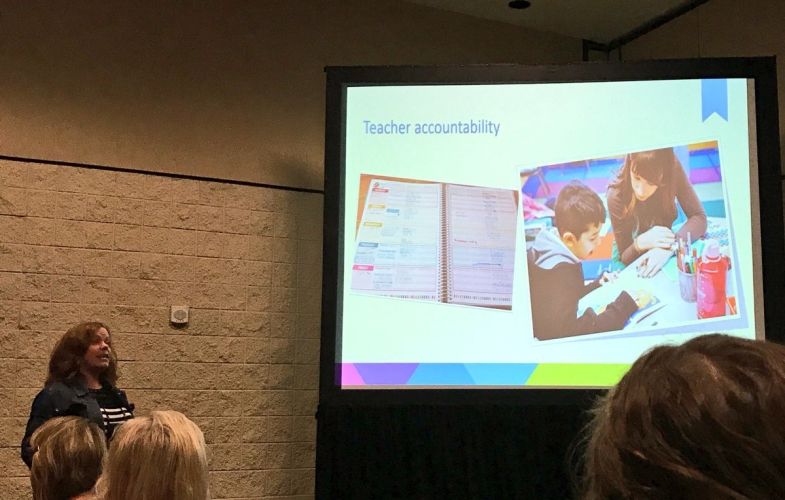
But if we do this, we are showing our students that reading is not the most important time of the day. And if research shows that reading increases reading ability, that’s not the message we want to portray. If there is a fire drill, an assembly, a visiting parent or a sick student, independent reading time stays in the books. “Time spent reading in the classroom contributes significantly to growth in reading achievement” (Taylor, Frye, & Maruyama, 1990).
We must be accountable for conferencing, giving book talks and holding students accountable.
Student accountability is a tricky one. While we need to hold them accountable, we should do it authentically. We don’t need to question them every day. Micromanaging will damage trust and turn our reluctant readers off in a heartbeat. I suggest trying one of these 8 Alternatives to Reading Logs. All of these options have worked for me.
3. Provide Easy Access to the RIGHT Books.
The simple access to books also improves reading performance (Lindsay, 2010). Accessibility is not just a matter of having books on the shelf in your room. Students need to be able to find what they want. Organizing your library can have a huge impact on accessibility. If books in the classroom are organized by author’s last name or by level, many students will not find that special book.
With the same premise, while leveled books are a great tool for teachers and an obvious way to organize your school’s bookrooms, in the classroom, books should be grouped by genre, topic or subject.
I also strongly believe in “making difficult books accessible and easy books acceptable” (Fielding & Roller, 1992). Students who have a difficult time reading shouldn’t be ashamed of reading lower leveled books. Modeling through read alouds and offering engaging, books written at a lower level will help translate this notion. Offering some “book candy,” books that are more of a light read, gives students a chance to rest and read with no stress and no judgments—and therefore no pressure to start fake reading.
What types of books should our libraries have to help engage all students and combat fake reading?
We especially need books with more mature content and a lower Lexile level, and books in a series. Research strongly supports series books.
When students read a series:
- They deepen their connection with the books’ characters
- They increase comprehension
- They increase reading time
- They don’t waste time trying to decide what book to read next
For ELL students:
- They are familiar with the characters
- They are familiar with the vocabulary the author uses
- That familiarity helps increase success and understanding with each book in the series
Click here to see my list of 25+ Must-Have Books and Series for Reluctant Readers, including series, graphic novels, books with the “Eww” factor and more.
4. Multimodal Resources Are a Must.
Media images, movies and sound inundate communication. While they serve many academic purposes in learning, they are also the perfect way to motivate students to pick up a book. Many books have book trailers online. They are usually short and provide a snapshot of what the book is about. The sound will often allude to the tone, too.
In this trailer, Pax is introduced with video, music, illustrations and reviews.
Who wouldn’t want to read (and I mean really read, not fake read) a book about parrotfish after watching this video?
Media engages, motivates and offers background knowledge to support readers.
To End Fake Reading, It’s About Trust and Support.
Culture, accountability, access to the right books and the use of media all go a long way to grabbing those fake readers. Once they get hooked by that first book, more will follow. I have found that the key is to be supportive and accepting of their choices. Especially early in the year, let them choose. Don’t worry if it’s book candy. While we all love a little chocolate, we won’t want it every day.
Keep talking about the books you have, and keep encouraging new books. Fake readers often need that big hook. Many times they’ve experienced negative emotions when it comes to reading. That history builds when we don’t value their choices and picks. When we micromanage, we get pushback. When we trust and support, we get cooperation.
Resources:
Fielding, L., & Roller, C. (1992). Making difficult books accessible and easy books acceptable. The Reading Teacher, 678-685.
Guthrie, J. T., & Klauda, S. L. (2016). Engagement and motivational processes in reading. Handbook of individual differences in reading: Reader, text, and context, 41-53.
Lindsay, J. (2010). Children’s access to print material and education-related outcomes: Findings from a meta-analytic review. Naperville, IL: Learning Point Associates.
Mitchell, C., & Reid‐Walsh, J. (1996). Reading on the Edge: serious series readers of Nancy Drew and Hardy Boys mysteries. Changing English, 3(1), 45-55.
National Reading Panel (US), & International Reading Association. (2002). Evidence-based reading instruction: Putting the National Reading Panel report into practice. International Reading Assoc.
Nielen, T. M., Mol, S. E., Sikkema-de Jong, M. T., & Bus, A. G. (2016). Attentional bias toward reading in reluctant readers. Contemporary Educational Psychology, 46, 263-271.
Rudd, D. (2000). Enid Blyton and the mystery of children’s literature. St. Martin’s Press.
Taylor, B. M., Frye, B. J., & Maruyama, G. M. (1990). Time spent reading and reading growth. American Educational Research Journal, 27(2), 351-362.
Watson, V. (2000). Reading Series Fiction: From Arthur Ransome to Gene Kemp. Psychology Press.


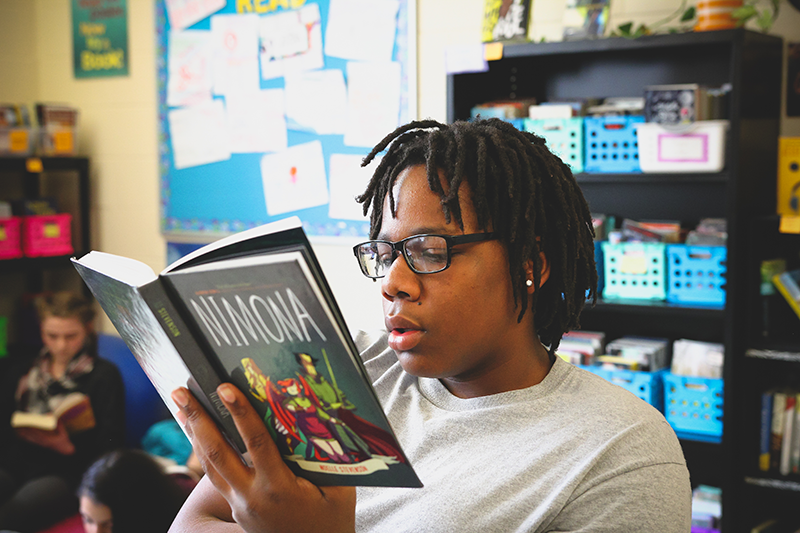

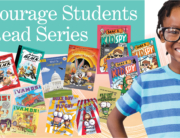

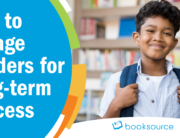

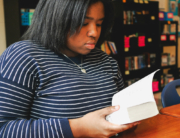
Could you email this to me. I’d love to share this at school.
Thank you,
Debbie Hines
RSA, reading tutor
Of course, Debbie, we’re glad to hear you want to share! Look for the email with a pdf version of this blog post in your inbox. – The Booksource Team
Wouldn’t fake reading be a result of a learning disability? My son would fake read before we found out that he has trouble reading. He passed all his reading tests and made good grades. I’m afraid too many children fall through the cracks when they’re seen as needing more practice instead of appropriate decoding skills. Although the tips in the article are helpful but it doesn’t point to children who cannot decode naturally and effortlessly.
It is always important for teachers and parents to identify the underlying causes of fake reading. Some students do, in fact, fake read as a result of difficulties and/or disabilities. However, other students fake read because they need more support to find the right books and engage with reading in a meaningful way. The focus of this post is specifically on the latter, and trying to provide support for teachers as they try to engage these reluctant readers.
May I PLEASE have this emailed to me as well. I’ve just previously had conversations with my host teachers about moving past fake to engaged readers. This article is an awesome source of research which supports some of my thoughts!
Of course, Sylvia, we’re sending it to you now! – The Booksource Team
I have a ton of research to share if you are still working to show colleagues why and how we need to engage readers in authentic reading. I am passionate about transforming reluctant readers into robust readers!
Berit Gordon, author of No More Fake Reading
I love seeing this amazing article, and hearing that teachers are looking for strategies to end fake reading! Turning reluctant readers into robust readers is built on choice reading. But I also believe we can keep, to some degree, the class novels that many English teachers love. But considering that less than 2% of college students will become English majors, what I most care about is that all my students are READERS!
Berit Gordon, author of No More Fake Reading
Yes!!!! Please send me a pdf of this article. Thanks in advance.
Absolutely, Kecia. We’ll send it today!
Can u please email this to me too? Thanks!
Yes, look for it in your inbox!